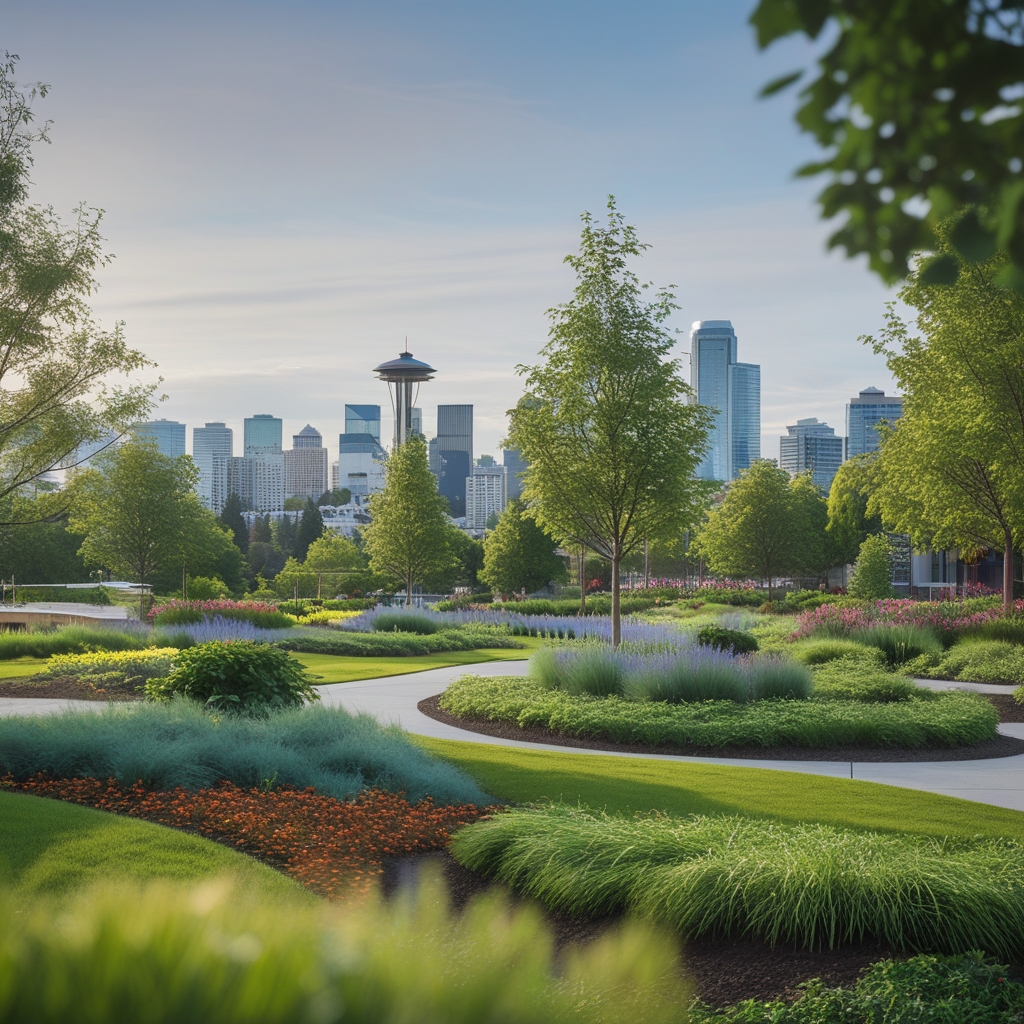Best Sustainable Landscaping Practices in 2025
As environmental awareness continues to grow, sustainable landscaping practices have become a focal point in 2025, aiming to create eco-friendly, functional, and aesthetically pleasing outdoor spaces. Here are some of the leading sustainable landscaping practices shaping the industry this year:
- Meadowscaping
Meadowscaping involves transforming traditional lawns into natural meadows filled with native grasses and wildflowers. This approach reduces maintenance, supports local wildlife, and enhances biodiversity. Starting with small wildflower borders or allowing certain areas to grow wild can be effective ways to implement meadowscaping.
- Integration of Native and Edible Plants
Incorporating native plants into landscapes ensures that gardens are well-suited to local climates, reducing the need for excessive watering and fertilizers. Additionally, blending edible plants with ornamentals, known as ‘edimentals,’ provides both aesthetic appeal and food sources, promoting self-sufficiency and sustainability.
- Water-Wise Landscaping
With increasing concerns about water scarcity, water-wise landscaping practices have gained prominence. Techniques such as xeriscaping, which utilizes drought-tolerant plants, and the creation of rain gardens to manage stormwater runoff, are being widely adopted to conserve water and maintain healthy landscapes.
- Reduction of Traditional Lawns
Traditional lawns require significant water and maintenance. In 2025, there is a noticeable shift towards minimizing lawn areas in favor of native plantings, gravel gardens, or other low-maintenance alternatives that are more sustainable and environmentally friendly.
- Adoption of Green Infrastructure
Green infrastructure practices, such as the installation of green roofs, rain gardens, and bioswales, are being integrated into landscape designs to manage stormwater naturally, improve air quality, and enhance urban aesthetics.
- Use of Permeable Surfaces
Replacing impervious surfaces with permeable materials allows rainwater to seep into the ground, reducing runoff and promoting groundwater recharge. This practice is especially beneficial in urban areas to mitigate flooding and support sustainable water management.
- Simplified Garden Maintenance
Simplifying garden designs by choosing low-maintenance plants, reducing lawn areas, and utilizing durable materials can lead to more sustainable landscapes. This approach not only conserves resources but also reduces the time and effort required for upkeep.
- Emphasis on Biodiversity
Creating diverse plantings that support a variety of pollinators and wildlife enhances ecosystem health. Incorporating plants that provide habitats and food sources for insects and birds contributes to a balanced and thriving environment.
By embracing these sustainable landscaping practices, homeowners and communities can create outdoor spaces that are not only beautiful but also environmentally responsible, contributing to the overall health of our planet. Contact Levy’s Lawns and Landscaping if you’d like expert landscaping services to enhance the beauty of your yard. (360) 876-6567
